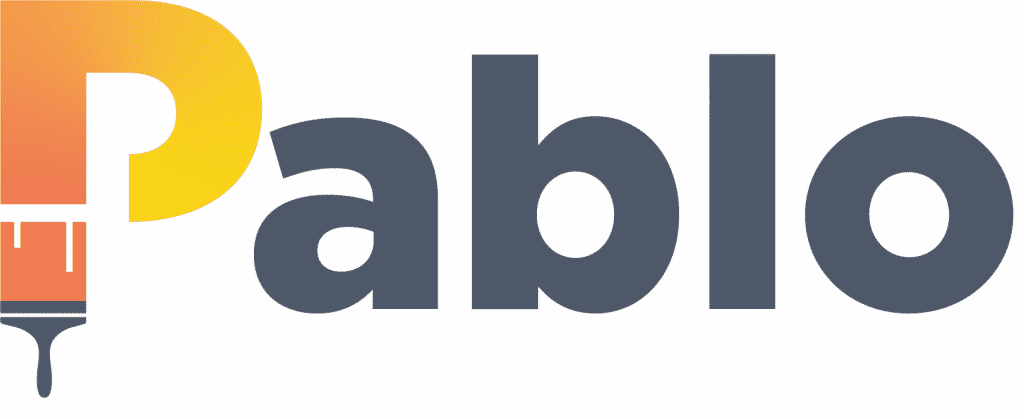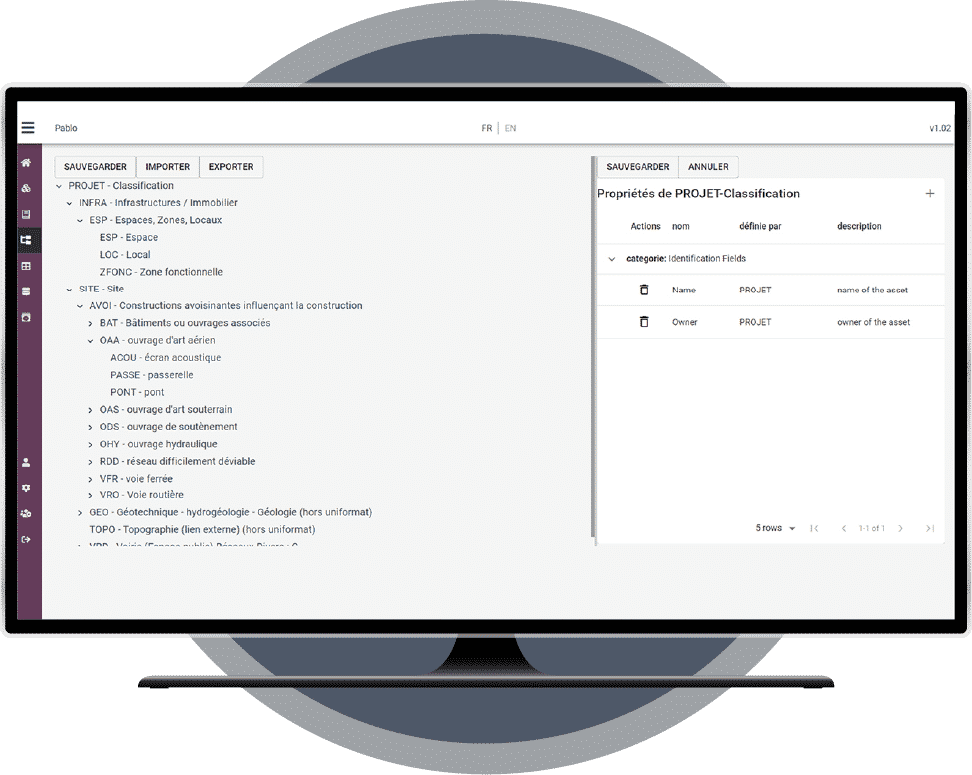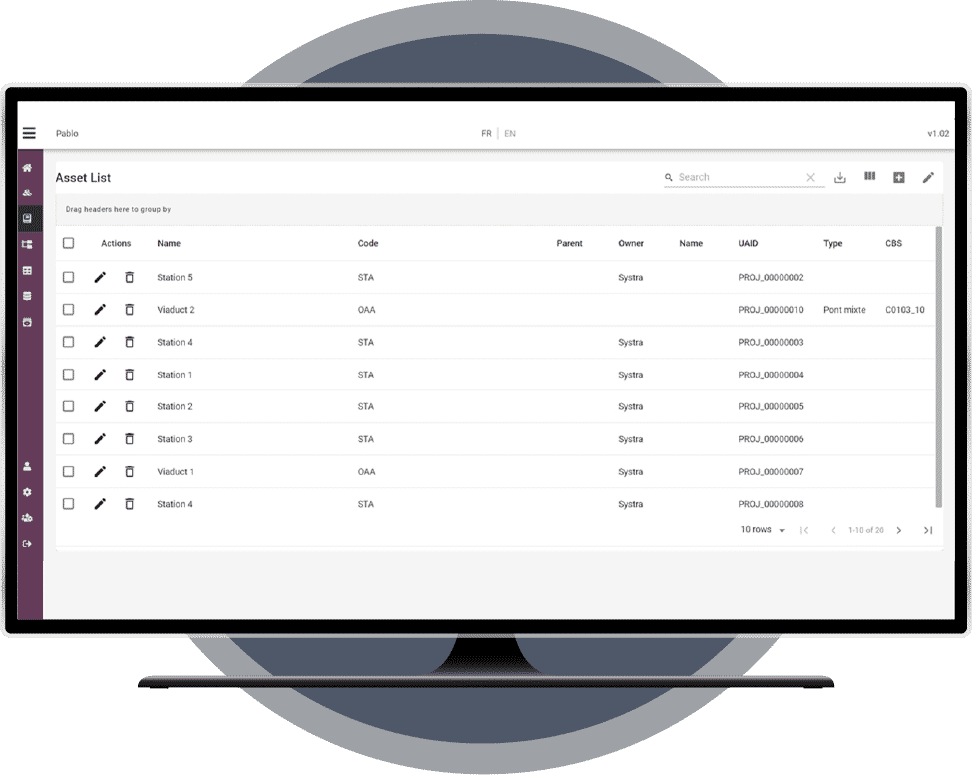
Builds the BIM data of your future digital
twin from early phase
An Asset Information Model (AIM) consists of BIM data related to assets as well as their documentation. By creating and structuring the BIM data, PABLO lets you take a giant step forward in building your AIM.
Building a digital twin involves gathering and organising the information about an asset that is required for its operation and maintenance. To do this, the operator and maintainer define the information they will need in order to structure and manage assets within the Asset Information Model (AIM). It is important to build the AIM from the design phase of the project to have a global vision of its assets and thus facilitate the transfer of information that takes place between the construction phase and the commissioning of the infrastructure. Without an AIM, the As built information delivery will not meet the requirements of the ISO19650 standard and will not be very usable: the data will be heterogeneous, unstructured, not compatible with the Client CMMS, and will not be able to feed the digital twin.
Features

Structure the asset register
- Define the properties library
- Structure the assets and their properties
Feed the register
- List the assets
- Modify the properties of an asset
- Feed the links between assets


Link 3D models to assets
- Import models in 60 different formats
- Visualise the models in a web navigator
- Define the links between 3D objects and assets
Share BIM data
- Connect the tool to the client’s asset register
- Reinject the data into the BIM models


Benefits
- Design and structuring of the AIM from the upstream phases of the project
- Implementation of the information data on the assets in the BIM models of the project
- Accessibility and modification of the properties of the BIM objects for all stakeholders
- Possible modification of the data model throughout the lifecycle of the infrastructure
- Conformity with the ISO 19650-3 standard from the Project Information Model (PIM)
Focus on AIM

What is an Asset Information Model (AIM)?
The Asset Information Model centralises and structures the asset information required for its operation and maintenance. It supports the strategic and daily asset management processes established by the project owner.

What data does it contain?
An AIM could contain equipment records, accumulated maintenance costs, records of installation and maintenance dates, ownership details and other details that the owner considers valuable and wishes to manage in a systematic way.

How is it produced?
It is determined or updated from the Project Information Model (PIM), which contains project-related information and was developed as part of the planning and implementation process. Only part of the PIM is included in the AIM, as much information is not required for the operation and management phase.

Who uses the information in AIM and for what purpose?
The AIM is used by operators and maintainers to optimise their activities and improve their services to end users.

Within the BIM process, when should an AIM be built?
It is important to structure and build the AIM in the design phases of the project to have a global view of your assets and thus facilitate the transfer of information that takes place between the construction phase and the commissioning of the infrastructure. The operator and maintainer participate in the structuring of the AIM and define the information they will need according to their future needs.

Why is AIM essential?
Without AIM, your As Built information delivered, which is mandatory under the ISO19650 standard, will be of little use: the data will be heterogeneous, unstructured, not compatible with the Client CMMS and will not be able to feed the digital twin.
Want to know more? Come and meet us!

Louis-Marie Borione
Head of the DEV4BIM Programme
Product Owner PABLO
 Australia
Australia  Brazil
Brazil  Canada
Canada  China
China  Denmark
Denmark  France
France  India
India  Indonesia
Indonesia  Ireland
Ireland  Italy
Italy  Malaysia
Malaysia  New Zealand
New Zealand  Norway
Norway  Poland
Poland  Saudi Arabia
Saudi Arabia  Singapore
Singapore  South Korea
South Korea  Sweden
Sweden  Taiwan
Taiwan  Thailand
Thailand  United Kingdom
United Kingdom  United States
United States  Vietnam
Vietnam